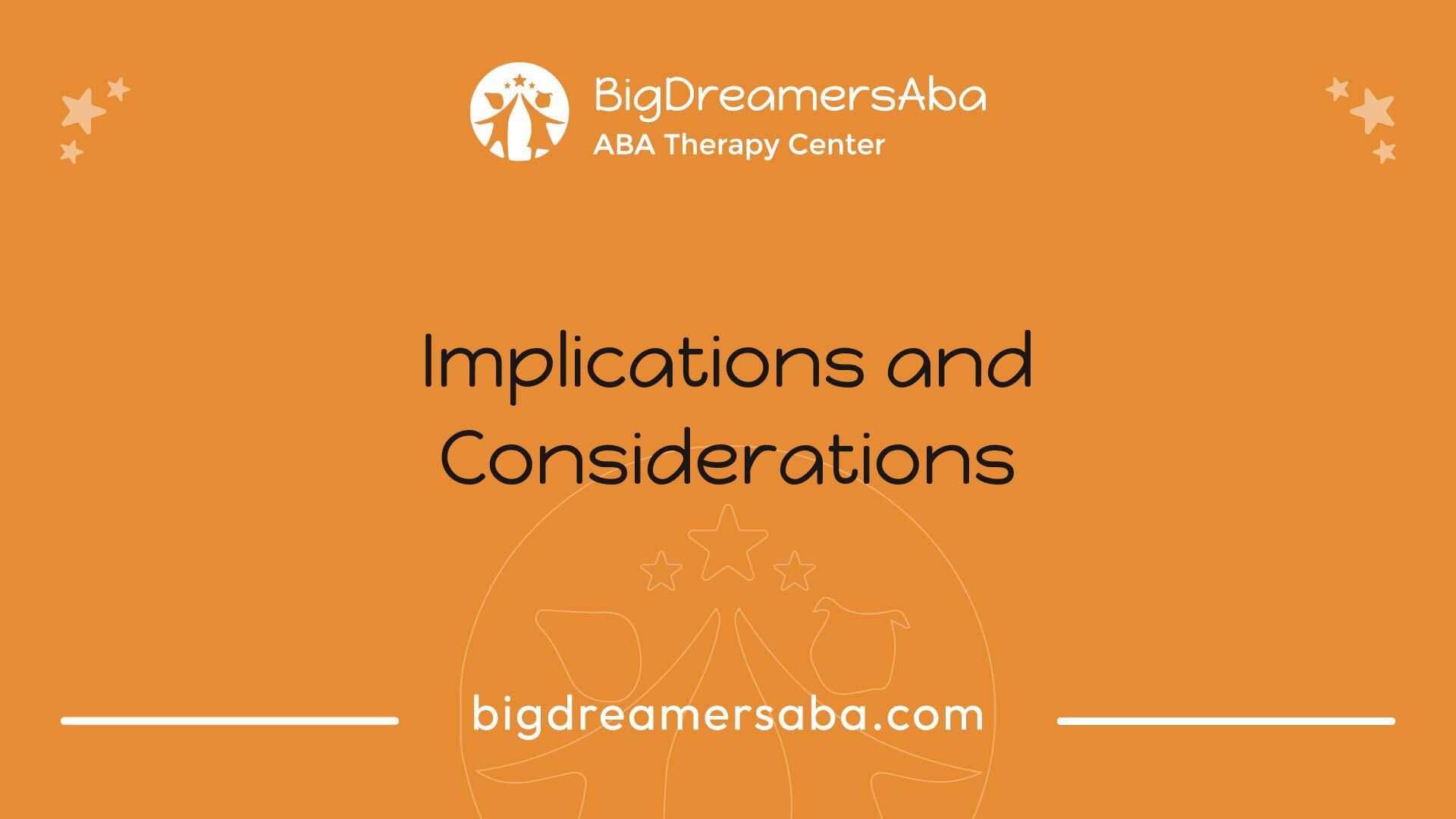The Role of Staring in Autism Diagnosis
Curious if is staring a sign of autism? Explore how staring behavior plays a role in autism diagnosis.

Understanding Staring Behavior

Staring Behavior in Autism
Staring is a behavior observed in individuals, including those with autism spectrum disorder (ASD). While the tendency to stare might raise questions about its indications, it is essential to understand that staring may not necessarily signal autism. Staring alone is not a definitive sign of the disorder, as it can be influenced by various factors such as curiosity, concentration, or differences in visual processing.
In some cases, individuals with autism experience difficulties with initiating and maintaining eye contact. This challenge can stem from differences in social cue processing or sensory sensitivities, making eye contact feel overwhelming or uncomfortable [2]. These behaviors contribute to the complexity of understanding staring within the context of autism.
The following table summarizes the reasons behind staring behavior in both individuals with and without autism:
Reasons for StaringIndividuals with AutismIndividuals without AutismCuriosityYesYesConcentrationYesYesSensory sensitivitiesYesNoSocial cue processing difficultiesYesNo
Variability of Staring as a Sign
The variability of staring behavior as an indicator of autism is significant. Some individuals with ASD may exhibit intense staring while others may avoid eye contact altogether. Research emphasizes that not all people with ASD present the core symptoms of the disorder in the same manner. Additionally, individuals without ASD can also display signs of autism-like staring behaviors [3].
This variability indicates the need for comprehensive assessments that consider staring within the broader spectrum of social communication skills and behavioral patterns. Staring or intense eye contact should not serve as the sole basis for diagnosing autism. Professionals consider other behavioral markers, such as delayed language skills and social interaction challenges, especially since signs often become apparent in early childhood [2].
Understanding the nuances of staring can aid in better recognition of autism symptoms, which is pivotal for early diagnosis and intervention. For those interested in the relationship between visual behavior and autism, exploring visual stimming may provide additional insights.
Detection and Diagnosis

Understanding the role of staring behavior in autism is crucial for effective detection and diagnosis. Although staring can be a symptom of autism, the pattern and context in which it occurs are vital for accurate interpretation.
Observing Staring in Autism
Staring behavior in individuals with autism can manifest differently compared to neurotypical peers. Researchers have indicated that autistics may engage in eye contact, but it is often asynchronous—who may appear fixated on an object or space rather than connecting with others Discovery ABA. This distinct gaze behavior can pose challenges for those trying to determine if staring is indeed indicative of autism or if other factors are influencing the behavior.
It's important to differentiate between absence seizures and non-epileptic spells, which may also present as staring. According to studies involving children with autism spectrum disorder (ASD), up to 140 have shown staring spells that could be mistaken for seizures, complicating the diagnostic process Discovery ABA.
Behavior TypeDescriptionGaze behaviorMay include prolonged staring, often asynchronous, and different from neurotypical eye contact patterns.Staring spellsCan be categorized as absence seizures or non-epileptic spells, requiring careful observation for proper diagnosis.
Diagnostic Challenges
Diagnosing autism based on staring behavior faces several hurdles. As noted, not all people with ASD display the same core symptoms. Individuals without autism may also show similar gaze behaviors, leading to ambiguity in diagnosis Autism Speaks. This variability complicates the process of determining whether staring is a sign of autism or the result of other factors.
Researchers have focused on studying the neural correlates of gaze behavior in individuals with autism to enhance understanding and diagnostic accuracy. Insights gained from these studies could help delineate gaze behavior specific to autism from those seen in neurotypical individuals, improving the overall diagnostic framework AB Tabas.
For a comprehensive assessment, it is advisable to conduct a functional behavior analysis that considers all observed behaviors, including staring. This method includes monitoring the context and duration of the behavior as part of a broader evaluation of autism symptoms. Accurate diagnosis requires considering genetic factors, as genetic sources account for approximately 60 to 90% of the risk of developing autism Discovery ABA.
Understanding the complexities of staring behavior can lead to better support for individuals with autism and enhance the accuracy of their diagnosis. For more information on specific behaviors associated with autism, including variations in gaze, consider exploring topics like intense stare in autism or examples of visual stimming.
Implications and Considerations

Understanding the implications of staring behavior in individuals with autism spectrum disorder (ASD) is crucial for recognizing how it affects their social interactions and coping mechanisms.
Impact on Social Interactions
Staring behavior can significantly impact social interactions for individuals with ASD. Difficulties with eye contact are often an early indication of autism and create considerable barriers in social situations. These individuals may find direct eye contact anxiety-inducing, leading to avoidance behavior. This avoidance can hinder their ability to form connections and understand social cues.
Research indicates that sensory differences related to hypo- and hypersensitivity can influence how individuals perceive and respond to social stimuli. Individuals with ASD may struggle to interpret the social signals conveyed through eye contact, making it harder to engage effectively in interpersonal relationships.
The table below summarizes the impact of staring behavior on social interactions:
Interaction AspectDescriptionDifficulties in Eye ContactOften leads to social anxiety and avoidance.Misinterpretation of Social CuesChallenges in understanding unspoken messages during conversations.Barriers to Social EngagementDifficulty building relationships due to lack of eye contact.
Coping Mechanisms and Behaviors
Coping mechanisms employed by individuals with ASD can vary widely in their effectiveness. Some may engage in visual stimming behaviors, such as staring at objects or patterns, which can provide comfort and help manage overwhelming sensory experiences. This type of behavior can also serve as a self-soothing strategy, offering a temporary escape from anxiety and social pressure.
On the other hand, challenging behaviors, including aggression and self-injurious actions, can also occur. This is particularly prevalent among over 40% of individuals with ASD, impacting their ability to interact socially [6]. Understanding these coping mechanisms is essential for developing effective support strategies.
The following table highlights common coping strategies and their implications:
Coping MechanismDescriptionImplicationsVisual StimmingStaring at objects to soothe and manage sensory overload.Can facilitate temporary calm but may limit social interactions.Avoidance of Eye ContactReduces anxiety in social situations.Can hinder relationship-building opportunities.Self-injurious BehaviorsActions taken in response to overwhelming situations.Can necessitate intervention and support for safety.
Awareness of these factors can inform better approaches for support, ensuring that individuals with autism can engage more fully with their social environment. Resources such as visual stimming treatment and functional behavior analysis can aid caretakers and professionals in assisting individuals who may exhibit staring behaviors. For those seeking more information, discussing strategies for understanding these challenges can enhance the connection between individuals with ASD and their peers.
Factors Influencing Staring
Understanding the factors that influence staring in individuals with autism spectrum disorder (ASD) is essential for deeper insights into their behavior. This section addresses sensory perceptions in ASD and various models that explain the phenomenon of staring.
Sensory Perceptions in ASD
Sensory perceptions significantly affect how individuals with autism interact with their environment. Many individuals with ASD experience differences in sensory processing, categorized as either hypersensitivity or hyposensitivity to sensory stimuli. According to the DSM-5™, these differences fall under restricted repetitive behaviors as noted by the Indiana Institute on Disability and Community.
These sensory differences can lead to challenges in social communication. For example, many autistic individuals might find reciprocal eye contact unnatural or overwhelming. Research indicates that individuals with autism generally exhibit less overall gaze compared to neurotypical individuals, often manifesting in avoidance of eye contact or shorter durations of sustained gaze [7].
Sensory SensitivityDescriptionHypersensitivityOverreacting to sensory input, leading to discomfort or distress, which may result in avoiding eye contact.HyposensitivityUnderreacting to sensory input, which might cause a lack of awareness of social cues, including eye contact.
Models Explaining Staring in Autism
Several models have been proposed to explain the atypical eye contact behaviors observed in individuals with ASD. Each model provides different perspectives on how sensory perceptions, social motivations, and cognitive processes influence staring.
These models help in understanding the underlying mechanisms of staring and can aid in responses and interventions. For further exploration into this topic, check our resources on autism and staring and learn more about what is visual stimming?.
Addressing Challenging Behaviors
Understanding and managing challenging behaviors in individuals with autism spectrum disorder (ASD) is crucial for improving their quality of life. These behaviors can manifest in various forms and may require tailored approaches for effective treatment and management.
Challenging Behaviors in ASD
Challenging behaviors commonly associated with ASD include aggression toward others, self-injurious actions, and severe tantrums. Research indicates that over 40% of individuals on the autism spectrum engage in both aggressive and self-injurious behaviors [8]. The variability of these behaviors can be complex and is influenced by multiple factors including environmental stressors, communication difficulties, and medical comorbidities.
Type of Challenging BehaviorPrevalence (%)Aggression Toward Others40+Self-Injurious Behavior40+Severe TantrummingSignificant incidence
Challenging behaviors may also stem from difficulties with interoception, which refers to the perception of internal bodily sensations. Many individuals on the autism spectrum may experience heightened sensitivity to discomfort or pain, which can lead to challenging behaviors as a response to internal stimuli [8].
Treatment and Management
The treatment of challenging behaviors in individuals with ASD has shown moderate success. Research suggests that many individuals who engage in self-injurious behaviors may continue to exhibit these behaviors even after interventions, as some may persist for up to ten years despite ongoing support [8].
Common treatment strategies include:
By addressing these behaviors with a comprehensive treatment and management plan, caregivers can create supportive environments that foster positive growth and development for individuals with ASD. For more insights on other related topics, you can explore links on anxiety in autism, visual stimming treatment, or autism and staring.
Anxiety and Behavioral Patterns
Anxiety in Autism
Anxiety is a common mental health concern for individuals with autism. Research indicates that anxiety disorders are often prevalent among this population, contributing to various challenging behaviors. These can include aggression, self-injurious actions, and tantrums. Anxiety can act as both an antecedent and a setting event for these challenging behaviors, meaning it can either trigger them or create a situation where they are more likely to occur [8]. Understanding anxiety in autism is crucial for effective diagnosis and management.
Type of Anxiety DisorderPrevalence in Autism (%)Generalized Anxiety Disorder25Social Anxiety Disorder30Specific Phobias20Obsessive-Compulsive Disorder10
This table illustrates the prevalence of various anxiety disorders among individuals with autism, highlighting the significant role that anxiety can play in their daily lives.
Anxiety as a Trigger
The relationship between anxiety and behavior in autism is complex. Anxiety can lead to increased staring, which some may wonder, "is staring a sign of autism?." For individuals with autism, staring may serve as a coping mechanism to manage overwhelming feelings or stimuli.
Understanding anxiety as a trigger for different behaviors can aid caregivers and practitioners. Recognizing situations that elevate anxiety levels can be essential for developing effective intervention strategies. By employing approaches such as functional behavior analysis and targeted therapies, individuals can learn coping mechanisms to manage their anxiety and associated behaviors.
Anxiety can also manifest through visual stimming behaviors, which include staring, repetitive movements, or gazing at certain objects. These behaviors may provide sensory relief or comfort in stressful situations, and it's essential to differentiate between these behaviors and signs of other conditions. For more information, visit our article on what is visual stimming?.
The interplay between anxiety and staring behaviors is an intricate aspect of autism that requires further exploration and understanding. Implementing appropriate interventions can significantly enhance the well-being of individuals experiencing these challenges.
Recent articles

How Social School Support Makes School Transitions Easier for Children

How Long Does Autism Regression Last? Key Factors That Affect Progress
